On Thanksgiving weekend, the Saturday was spectacular, and rather than be a shut in hunched over a computer working on type, I wandered down to the waterfront. Ended up down by the HMCS Haida. Any time I’ve been down at the Haida before, it’s a half hour before closing or it’s closed for the winter season. Well this time I was there before 10:00, and for a paltry $3.90 I got to explore a fascinating piece of Canadian history.
(Taking photos inside was a challenge, partially because I have a crappy camera, the light often isn’t great, but also because it is really cramped inside, and many of the rooms you can’t actually go into. The angles you’re forced to visually record the different rooms from are often not the best to get the whole picture. Still, I hope they give you an idea.)
The prow of the ship.
After coming aboard, I decided to start at the front and work my way back.
These are the twin high angle 4" guns. The Haida was initially outfitted with three 4.7" guns, but these had a limited range of motion (-10° to 40°), and weren’t well suited for defense against enemy aircraft. Before long they were replaced with two 4" guns, which had an elevation of -10° to 85° . They were trained, elevated and fired electrically, but still loaded manually. There was however a manual backup, as with most of the systems on board, in case of a problem. 15 men manned the guns, with a further 12 supplying the ammo from below decks. The actual firing of the gun was done by the Loader, once the Gun Director on the bridge released the safety. Each barrel could fire 15 to 20 rounds per minute and it had a range of 14.5 km (9 miles or 7.8 nautical miles).
This was the Shipwrights shop, just behind the 4" guns. Dig the rug on the floor.
A scale model of the Haida as she would have looked in WW2.
A scale model of the Haida as she would have looked in the Korean War.
The ladder leading down into the forward crew quarters.
Various means of comms between sections and decks.
Known as the Mess Deck, this is where the enlisted crewmen lived. At night, hammocks were suspended from the black bars on the ceiling, and in the day were taken down and stowed in the benches.
Besides the human inhabitants, there was also an English Terrier called Bunker B (whatever it was called before is unknown - after it was soaked in bunker fuel from a leaking tank B, that was the name it was given), and a rabbit called Handy Built (no idea how it got that name). There were also lots of cockroaches.
It didn’t take me long to figure out that I could never have served aboard one of these ships. I had to walk around on my haunches or bent at the waist in most places. I think the optimal height to serve on one would have been about 5'5".
Lights! Action! Battlestations!
This is where all the information about the target, its speed, range, direction it was moving in, as well as the speed and direction the Haida was moving in were calculated, and the resultant coordinates were then relayed to the gun crews.
I don’t know enough about the electronics of the time to know if this and all the boxes on the walls would have been what was on board in the early forties, or whether these are later additions from the time of the Korean War.
The wash rooms for the enlisted crew, all 180 of them. Most guys were lucky to get three minutes of (probably not very warm) water every two or three days to wash and shave.
Radio room. The Haida has four radio rooms, this being the main one. Messages were monitored, sent and received here.
Wash area for the Petty Officers I believe.
I believe this was the pursers office, where the day to day administrations and supplies of the ship were handled.
Cramped quarters.
This is the bakery for the enlisted crew, where the night bakers prepared bread and occasionally cakes and pies. When done, the breads were brought up to the main deck to be stored in the bread locker under canvas.
In this tiny galley, 3 or 4 men prepared meals for over 200 men. The food was served to the duty mess men, who would then carry it back to their respective messes or eating areas.
Davits that held the motor cutters and whaler.
Gangway.
The Chief Petty Officers Second Class living quarters, including a small galley and their mess area. This is where the men of the engineering department, responsible for the operation and maintenance of the engine room, boiler rooms and gearing room were housed. While they had a few more amenities than the enlisted crew members, their quarters were still very cramped, like all other areas of the ship.
This was the captains day cabin, where he spent most of his time when the ship was at sea. Steps away from the bridge and the operations room which were right above. He also had a day cabin, further aft, for when the ship was in port.
The bridge, open to the elements. Can’t even begin to imagine how much of a challenge that must have been when they were doing the Murmansk run. Can’t really tell you what all the instruments were or what they did. Sorry. I’m a landlubber and the biggest boat I’m ever on is a canoe.
Looking aft.
40mm Boffins. Originally the Haida was equipped with 20mm Oerlikon cannons. These were later replaced with 4 single barrel 40mm Bofors cannons. Both weapon systems were meant to serve as anti-aircraft defense. The Boffin was a Canadian innovation where the Bofors were placed atop the Oerlikon mounts. They had an elevation of -10° to 70° which made them very useful for destroying floating mines during the Korean War, as their barrels could be positioned much lower than any of the Haida’s other guns. Served by a crew of 5, each barrel could fire 120 rounds per barrel per minute. Each gun had a range of approximately 5 km (3.1 miles or 2.7 nautical miles).
Interestingly they were made here in Hamilton at the old Studebaker plant – which if these guns were still operational, and the plant still standing, could hit.
The laundry.
The officers galley.
Radio room 2. This room contains three high frequency transmitters and two receivers. The large unit (PV 500) was used for morse code or teletype. The other two units were primarily voice or morse code. Normally controlled from Radio 1, they could stand alone in an emergency.
The Captain’s Day Cabin. The only private head and bath tub in the whole ship. This cabin could also be set up as an emergency operating theatre. Two successful operations were performed here while the ship was at sea.
The sick bay – the ship’s infirmary and hospital. During wartime the ship had a medical doctor, and in peace time a highly trained sick bay attendant – nicknamed a ‘tiffy’. The bunks were used to quarantine patients or for injured awaiting transfer to shore. The seriously ill or injured were often transferred to a larger ship for treatment. Member’s of the ship’s crew who were sick or required treatment would line up for ‘sick parade’ each morning usually around 08:00.
Engineering office/engineering officers cabin.
Coxswain’s (Regulating) Office. The senior NCO, the Coxswain worked closely with the Captain on the administration of the ship and crew. Mail was also sorted and sent from this office.
How sailors aboard the Haida did tattoos.
Torpedo launchers. The HMCS Haida carried four 21" Mark IX torpedoes. They were fired one after another in a spread and travelled up to 45 knots (84 kilometers) per hour, and as far as 5.5 knots (10 kilometers). They could be fired either to port or starboard. They were fired electrically from the bridge, or from the tubes themselves, either by electric motor or by hand. If they missed their target, they would sink to the ocean floor and explode. Each torpedo weighed 3000 pounds and was loaded while the ship was in harbour. The warhead contained 250 pounds of Torpex, which was equivalent to 800 pounds of TNT.
Antenna.
The emergency steering position. If the wheelhouse was damaged or failed, this was the back-up. When the ship was in action, this was where the executive officer (the second in command) was stationed.
Another view of the davits.
They could really liven the place up with some bright splashes of colour here and there.
Oh here we go.
During WW2 twin 4" guns were located here, but during the major refit, they were replaced with 3"50 guns, to serve as both anti-aircraft and surface weapons. During the Korean War, these guns were used to destroy North Korean and Chinese supply trains, destroying two locomotives on one patrol. Crewed by 12 men, with an elevation of -10° to 85°, each barrel could fire 40 rounds per minute, and had a range of 9.14 km (5.7 miles/5 nautical miles).
Gunnery repair room.
Magazine. Containing 200 rounds for the nearby 3"50 guns, interlocking canisters prevented rounds from moving around at sea. It also served as a shelter for the gun crews.
Squid anti-submarine mortars.
The Squids themselves. Stored two decks below, they were hoisted up and placed on conveyors to be passed out to the mortars.
Sea mines. No idea if these were Canadian, or if they were enemy sea mines.
Secured to a bollard.
The motor cutter. There were two of these on board, as well as a whaler, which was powered by oars or sails. Mainly used to transfer personnel and supplies between ship or shore.
On April 29th 1944, the HMCS Athabaskan and the HMCS Haida were in the English Channel to support a mine laying operation. Two German Elbe class destroyers, the T24 and T27, fired torpedoes and fled. The Athabaskan was hit and ten minutes later there was a second explosion. Within seconds she was submerged. Haida laid a smoke screen to protect her sister ship and turned to pursue the German destroyers. When she returned, the Athabsakan was gone and her crew spread over a half-mile of the English Channel.
Haida’s crew used ropes and nets to rescue 42 men, before Captain Harry DeWolf had to make the heart-breaking decision to depart. German planes would begin patrols at daybreak, and DeWolf had to save his own ship and crew from possible attack. Before departing he ordered his men to lower all the motor cutters, and Carley life rafts. I can’t even begin to fathom how that must have affected them.
Three men, Able Seaman Jack Hannam, Leading Seaman Jack McClure and Stoker William Cummings, stayed behind to try to rescue as many as they could, and managed to save 8. The cutter and its 11 passengers then made a 160 km journey back to England. The journey took 16 hours as they struggled with a spluttering engine. Thirsty, hungry, exhausted and despairing, they were finally rescued off the coast of Penzance.
(The dog mentioned earlier, Bunker B, was another loss of the battle. Usually locked in a room, for whatever reason he was was not. When the Athabaskan exploded, he was so frightened, he jumped off the ship and was never found.)
German forces picked up 85 survivors.
In all the Athabaskan lost 128 men, more than half her complement. Of those, 91 are buried in cemeteries along the coast of Brittany in France. The others rest at the site of the Athabaskan’s sinking, which is now a protected war grave in honour of those who perished with her.
I think they need to dust the building that houses the motor cutter a little more frequently, cause my allergies acted up in there.
Named after indigenous peoples of the British Empire, 27 Tribal class destroyers were built for Great Britain, Australia and Canada. 27 were built, 13 were sunk, 13 were scrapped – only the Haida remains.
She is currently closed for the winter season, but definitely worth a trip if you’re in the area between May and November.
Thursday, 17 November 2011
Subscribe to:
Post Comments (Atom)





















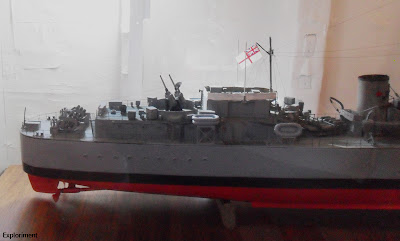











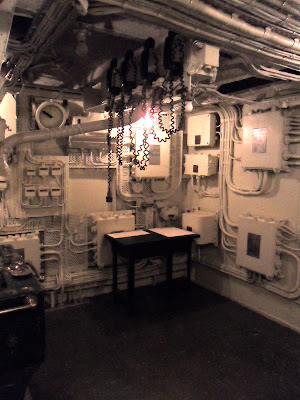












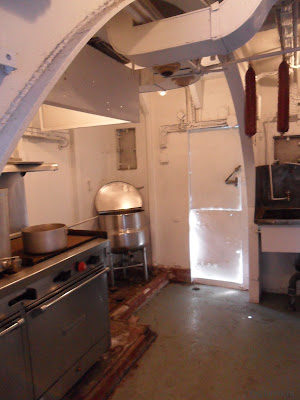









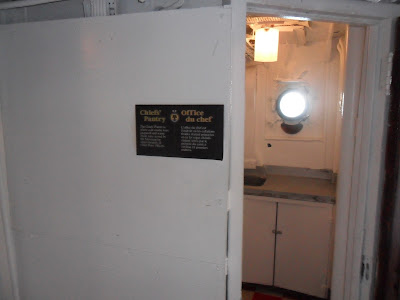

















































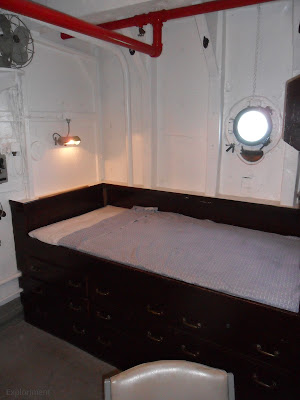




































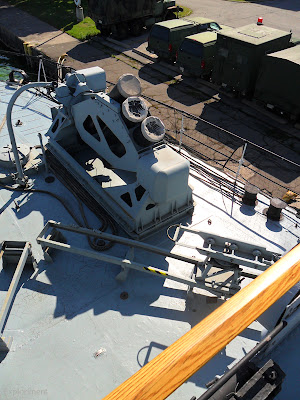
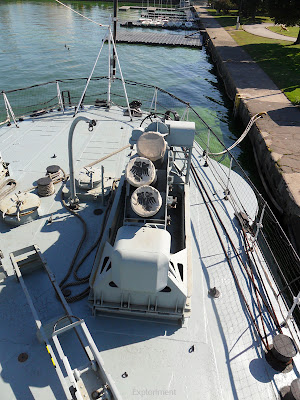







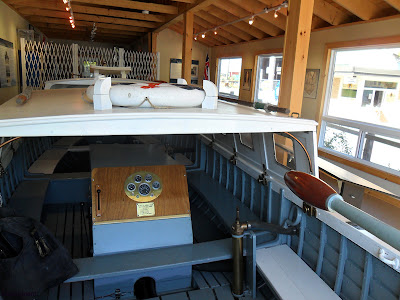




















Aye chihuahua. What you have there is the makings of a 'coffee table book'. Oh yes. And who are you trying to kid with the disclaimer about the quality of the photos? Sheesh. Those photos are GREAT!
ReplyDeleteThanks but not really. Trying to get good angles in rooms the size of broom closets was tricky, with a point and click even more so. Tried taking a bunch and then compositing them later, but again those goofy angles proved a problem.
DeleteYeah I took over 300 photos. Took me a while to edit, crop, shrink, watermark them, etc. Then I had to write everything. There probably is a coffee table book in that ship.